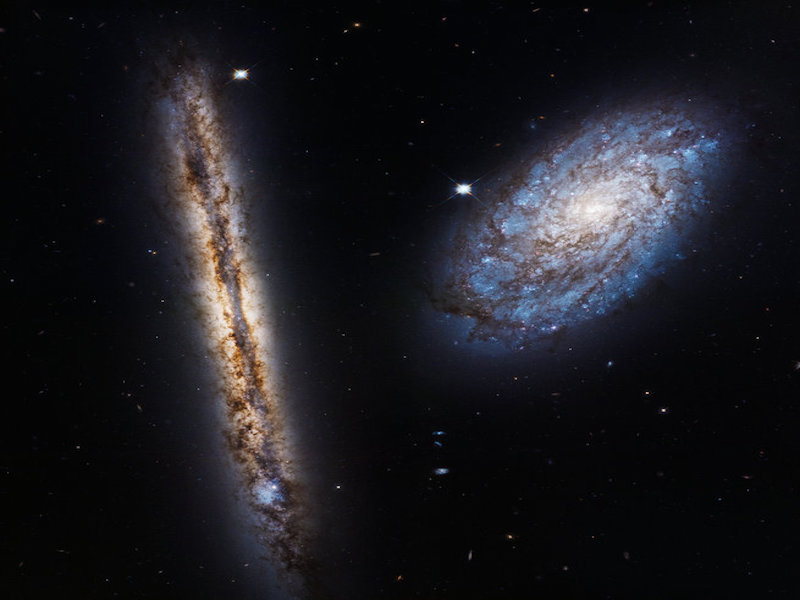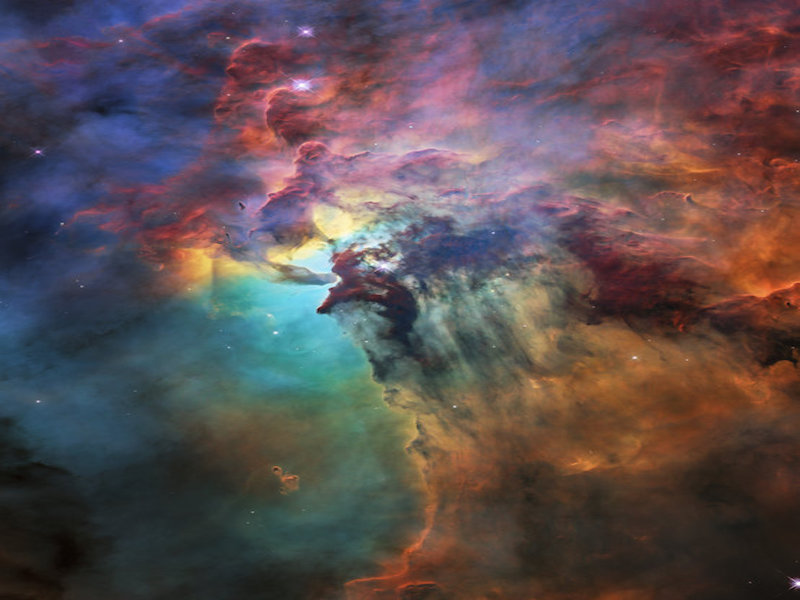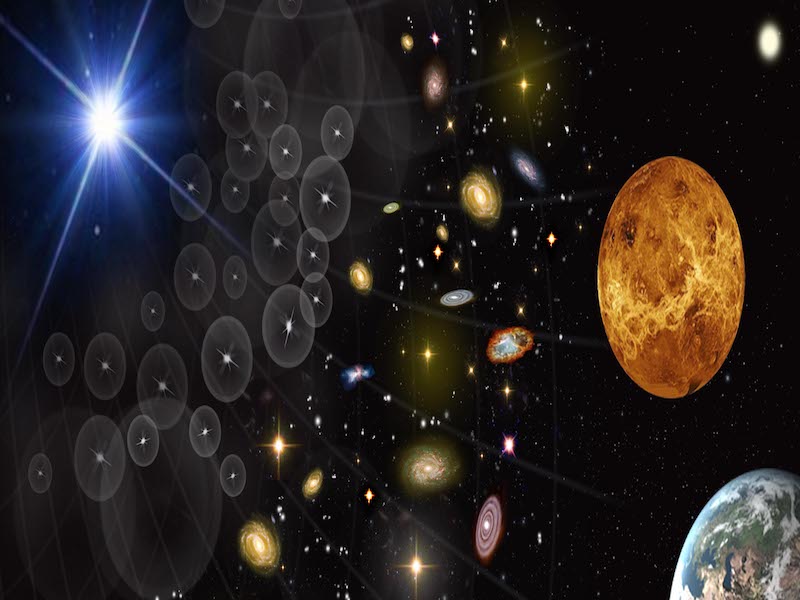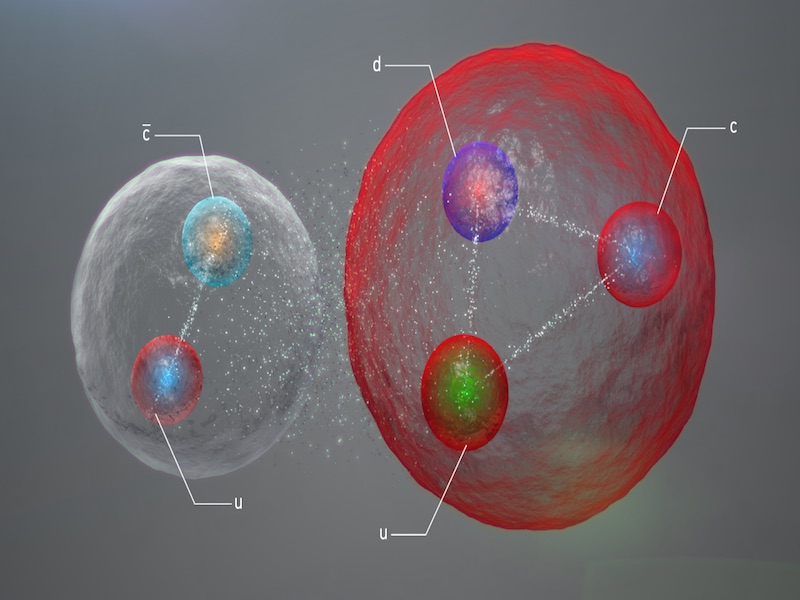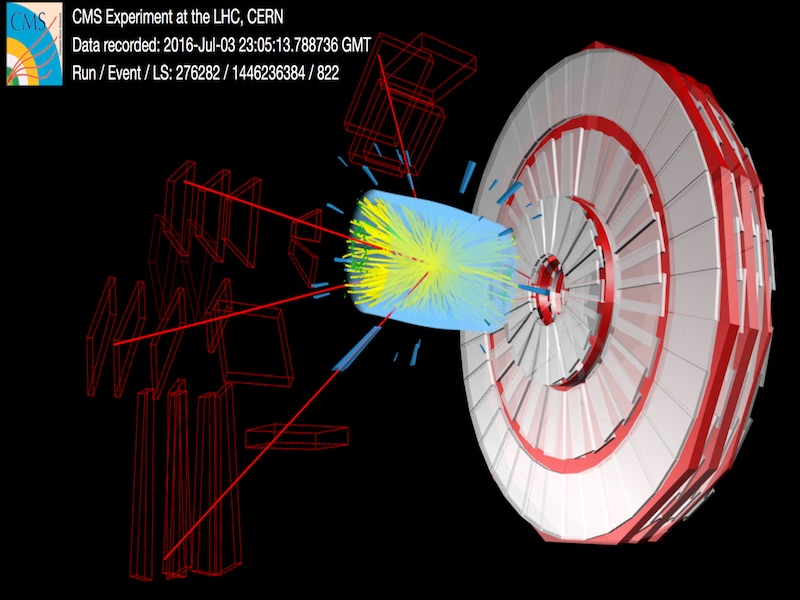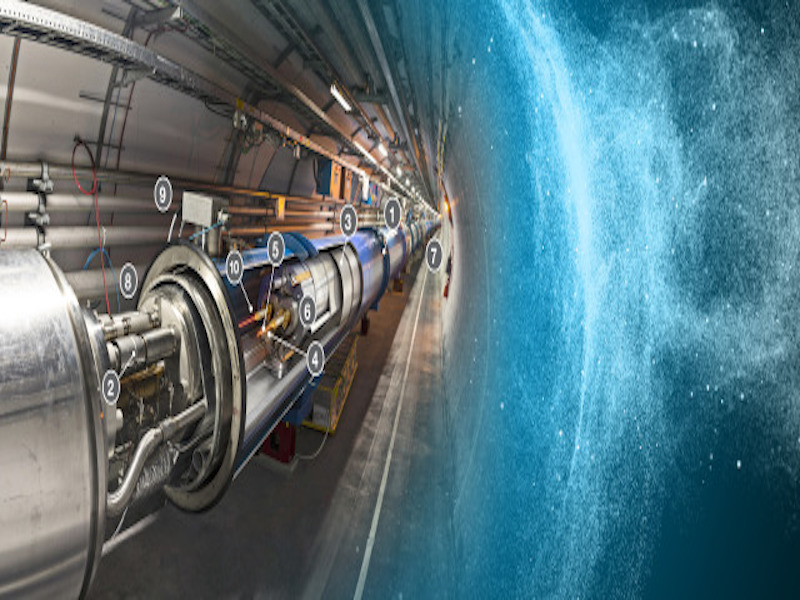CFTP offers a large number of Master's Thesis to students, and has a tradition of including, early in their careers,
both Master and PhD students in research activity.
Master Thesis at CFTP
Title: Propriedades de
Modelos com vários Higgs
Supervisors: João P. Silva e Jorge C. Romão
Contact: jpsilva@cftp.tecnico.ulisboa.pt,
jorge.romao@tecnico.ulisboa.pt
Discription:
Em Julho de 2012 foi anunciado no CERN a descoberta da partícula de
Higgs, prevista em 1964 por Higgs, Englert e Brout. Os dois
primeiros viriam a ter o Premio Nobel de 2013. Esta partícula
corresponde a um campo de spin zero, necessário para dar massa às
restantes partículas do Modelo Standard das Interacções
Electrofracas. Não há nada de fundamental na teoria que determine o
número de partículas escalares. Assim, ao mesmo tempo que se
determinam as propriedades da partícula encontrada, é necessário
procurar que alterações se prevêem caso existam mais partículas
escalares; os chamados modelos de multi-Higgs. Neste projecto,
pretende-se explorar as consequências para o LHC da presença de mais
do que um Higgs. O projecto poderá ter mais interface com as
experiências ou ser mais teórico, consoante os interesses da/o
aluna/o.
Title:
Mecanismos dinâmicos na origem da matéria (Dynamical mechanisms at
the origin of matter)
Supervisors: Ricardo González Felipe
Contact: ricardo.felipe@tecnico.ulisboa.pt
Discription:
Uma das questões fundamentais ainda não resolvidas na física de
partículas é explicar porque o nosso Universo é dominado por matéria
e não observamos antimatéria nele. A observação desta assimetria
matéria-antimatéria constitui também uma evidência da existência de
física para além do modelo padrão das interacções fortes e
electrofracas. Na tentativa de encontrar uma solução para este
problema, várias abordagens e modelos teóricos têm sido propostos ao
longo dos últimos anos. Em particular, a leptogénese é um dos
mecanismos mais apelativos para explicar esta assimetria, dada a sua
relação estreita com a física de neutrinos. Neste projecto,
pretende-se abordar algumas das questões em aberto neste campo.
Title: O papel
das simetrias na física de sabor (The role of symmetries in flavour
physics)
Supervisors: Ricardo González Felipe
Contact: ricardo.felipe@tecnico.ulisboa.pt
Discription:
A origem das massas e misturas dos fermiões constitui um dos
problemas fundamentais ainda não resolvidos na física de partículas.
Uma possibilidade de abordar esta questão consiste em estender o
modelo padrão das interacções electrofracas e fortes postulando a
existência de simetrias (horizontais) de familia. Em particular, o
uso de simetrias discretas de sabor tem-se tornado popular pelo
poder preditivo destas para explicar os angulos de mistura medidos
recentemente nas experiências de oscilações de neutrinos. Algumas
das questões em aberto neste campo serão abordadas neste projecto.
Title: Beyond the Standard
Model with Multi-Higgs
Supervisors: Margarida Nesbitt Rebelo, Gustavo
Castelo-Branco
Contact: rebelo@tecnico.ulisboa.pt,
gbranco@tecnico.ulisboa.pt
Discription:
There are several good motivations to extend the scalar
sector of the Standard Model (SM). Models with an extended scalar
sector usually have new sources of CP violation. It is already
established that the SM cannot account for the observed baryon
asymmetry of the Universe requiring new sources of CP violation.
Furthermore some of these extensions may also provide good dark
matter candidates. In addition, the existence of a richer scalar
sector has important implications for flavour physics.The Large
Hadron Collider (LHC) at CERN continues its experimental quest for
Physics Beyond the Standard Model after its recent major discovery
of one Higgs boson. The future of this field is exciting! The
directions of the research work will depend on specific interests of
the student. The student will start by being introduced to this
important topic of research.
Title: Physics
Beyond the Standard Model in the Leptonic Sector
Supervisors: Margarida Nesbitt Rebelo, Gustavo
Castelo-Branco
Contact: rebelo@tecnico.ulisboa.pt,
gbranco@tecnico.ulisboa.pt
Discription:
In the standard model, neutrinos are strictly massless.
As a result, one can conclude that the observation of neutrino
masses and oscillations provides clear evidence for Physics Beyond
the SM. With massive neutrinos there may be CP violation in the
leptonic sector, unlike in the standard model where there is neither
mixing nor CP violation in the leptonic sector. The fact that
neutrinos have no electrical charge allows for more terms to be
present in the Lagrangian than in the quark sector, and this has
extremely important phenomenological implications. In particular it
allows for a new mechanism to explain why there is matter in the
Universe rather than just radiation. Without matter life would not
be possible. This new mechanism is called Leptogenesis. The
directions of the research work will depend on specific interests of
the student. The student will start by being introduced to this
important topic of research.
Title: Extra
Dimensions and New Physics.
Supervisors: J.I. Silva-Marcos
Contact: juca@cftp.tecnico.ulisboa.pt
Discription:
We expect to find New Physics at the LHC-CERN. There is no known
fundamental principle why the Universe should have only 4
dimensions. Extra dimension (ED) models are inspired by string
theory, which itself is based on the existence of additional spatial
dimensions. As known, string theory is a main candidate for an
all-including quantum theory which allows for gravity, thus unifying
all elementary particle interactions. ED models have some advantages
over supersymmetric theories (which is another serious candidate for
New Physics). Besides the fact that they lead to the unification of
the gauge couplings, either at high 10^16 GeV scales for small
warped extra dimension models, or at the lower TeV scales for large
flat ED models, they also address the long standing puzzle of the
gauge hierarchy problem, i.e. the huge discrepancy between the
gravitational scale and the electroweak scale. Furthermore, there is
a viable Kaluza-Klein WIMP candidate for the dark matter of the
universe. In addition, ED models explain the large mass hierarchy of
the different types and generations of the SM fermions through a
geometrical mechanism. But what are the finer points of the fermion
mass hierarchy, mixing and CP violation, within ED models?
We also shall explore New Physics, in particular models inspired on
ED, with vector-like (extra) quarks and multi-Higgs models.
Title: Kinematic
preferences for the 750 GeV diphoton signal.
Supervisors: Igor Ivanov
Contact: igor.ivanov@tecnico.ulisboa.pt
Discription:
For several decades, particle physicists have been searching for
hints of New Physics, a fundamental theory which must replace the
Standard Model we currently have. Up to now, no definitive New
Physics signals have been detected. In December 2015, the two LHC
collaborations reported a peculiar excess in the two-photon channel
around 750 GeV, and it resulted in a hurricane of theoretical
publications. Hundreds of theoretical models could accommodate this
signal, but without further data, we cannot safely distinguish them.
However some information can be extracted even right now on purely
kinematical basis. If two photons appear in (cascade) decays of
hypothetical heavy particle(s), the exact invariant mass profile of
the excess depends on the phase space available and on the number of
accompanying undetected particles. In this project, we will derive
the invariant mass shapes for various assumptions on decay
multiplicity, and check which one gives a better fit to the data.
This project will allow a student to obtain a concrete scientific
result and to quickly jump into an activity at the bleeding edge of
particle physics.
In spite of the
successes of the SM, there are still three striking experimental
observations for which it offers no answer: neutrino masses, the
baryon asymmetry of the Universe and the observed dark matter (DM)
for which it offers no candidate. These three observations
strongly suggest the need of new physics. Our research objectives,
are therefore to explore extensions of the SM that can explain
these evidences. There are also important questions from the
theoretical side:
- Is the fundamental scalar discovered at LHC exactly the SM
Higgs?
- Can we extend the Higgs sector and understand new sources of
CP violation?
- Can we understand and compute the baryon asymmetry of the
Universe?
- Can we understand the origin of the observed DM?
- Is lepton flavour violated also in the charged lepton sector?
- Can we understand the stability of the small mass of the
Higgs boson compared with the Planck scale (hierarchy problem)?
- What is the origin of the proton spin?
- Can we understand the meson and baryon electromagnetic form
factors determined in new experiments in hadron physics?
To answer these
questions research at CFTP includes many hot topics in theoretical
particle physics and cosmology : Fermion Masses & Mixing, CP
Violation, Baryogenesis, Leptogenesis, Neutrino Physics, B Physics,
Supersymmetry, LFV, Extra Dimensions, Cosmology, Dark Matter &
Dark Energy, Inflation, Nuclear Physics, Hadronic Matter, Chiral
Symmetry, Confinement. Please see
also our list of publications. We have also a strong
interaction with theoretical and experimental groups at LIP and at
CERN.
These questions, at the frontier of the field, are aligned with the
big experimental effort being done or planed for the next decade, in
particular at CERN and JLab. These questions are connected in many
ways and we organize ourselves in four main lines of research that
cover all the above topics.
Research Team: G.C.
Branco, D. Emmanuel-Costa, R. González Felipe, F. Joaquim, L.
Lavoura, M.N. Rebelo, J.P. Silva, J. I. Silva-Marcos, J. C. Romao
and Long Term Visiting Professor F. Botella (U.Valencia)
Since the SM gauge group does not determine the number of scalars,
the pressing phenomenological question is to determine how many
fundamental scalars there are and what their exact nature is. An
extended Higgs sector may give new sources of CP violation with
important implications for Neutrino Physics and Leptogenesis. It can
allow for the possibility of having spontaneous CP violation, and in
some extensions together, with the inclusion of at least one
vectorial quark, allow for a common origin for all CP violations. It
can also provide a viable DM candidate. Included in this topic are
the study of the origin of fermion masses and mixing, CP violation
at B factories, baryogenesis, Physics at colliders and flavor
Physics.
Research Team: G.C.
Branco, D. Emmanuel-Costa, R. González Felipe, F. Joaquim, L.
Lavoura ,João Pulido , M.N. Rebelo, J. C. Romão, J.I.
Silva-Marcos and Long Term Visiting Professor J. W. F. Valle
(U.Valencia)
Oscillation experiments have achieved high precision in determining
the neutrino mass and mixing pattern. The most important new result
is the theta13 mixing angle recently measured by the Daya-Bay and
RENO reactor experiments. The fact that theta13 is not close to zero
may allow for the discover of CP violation in the lepton sector. The
old and long standing mystery regarding the origin of fermion masses
and mixing seems now even more intriguing: why are the neutrino
masses very suppressed and mixings large, in contrast with what is
observed in the quark sector. Included in this topic are the study
of neutrino-mass generation mechanisms, neutrino Oscillations,
CP-Violation in the Leptonic sector and Baryogenesis through
leptogenesis. Grand Unified Theories, with an extended Higgs sector
are also under study in this topic, as well as models dor Dm from
the Higgs sector.
FERMION MASSES AND MIXING, CP VIOLATION
AND BARYOGENESIS
Research Team: G.C.
Branco, D. Emmanuel-Costa, R. González Felipe, F. Joaquim, L.
Lavoura, P.A. Parada ,João Pulido , M.N. Rebelo, J.P. Silva,
J.I. Silva-Marcoss and Long Term Visiting Professor F. Botella
(U.Valencia)
The origin of fermion masses and mixing and of CP violation are some
of the major outstanding problems in particle physics. These members
of CFTP have been working actively in CP violation, as well as in
attempts at understanding the observed patterns of fermion masses
and mixing, both in the quark and in the leptonic sector. We are
especially interested in pursuing the following topics of research:
Family symmetries and patterns of neutrino mass matrices;
Baryogenesis through leptogenesis; CP violation at B factories;
Physics at colliders.
Research Team: J.C.
Romão, G.C. Branco, F. Joaquim, D. Emmanuel-Costa, L. Lavoura
Supersymmetry (SUSY) allows for deviations from the SM that are very
small at the electroweak scale, while offering a solution to the
hierarchy problem and provide a DM candidate. Also SUSY seesaw
models offer an explanation for the smallness of the neutrino masses
and open a window into charged LFV. The experimental search for SUSY
plays an important role in the analysis of the LHC data. The present
indication of a light Higgs boson with mass around 125 GeV is
compatible with a heavy spectrum. The next phase of LHC at 14 TeV
will be crucial to find out if this beautiful idea plays a role at
present energies. Included in this topic are supersymmetric
unification, supersymmetric neutrino-mass generation mechanisms, CP
violation in supersymmetry, Lepton-flavour violation (LFV), and Drak
Matter.
Research Team: T. Peña and Alfred Stadler, also in collaboration with
Jefferson Laboratory
In this area, our general objective is to create innovative
theoretical methods to interpret data from large experimental
infrastructures (e.g. at Jlab, HADES, PANDA/FAIR, LHCb). Meson and
baryon electromagnetic form factors are among the most fundamental
observables in hadron physics and they will be a focus of our
activity. They are essential for the puzzle of connecting the
observed properties of mesons and baryons and the underlying QCD
quark-gluon dynamics. Also the interpretation of the nuclear matter
emissivity from experiments of elementary reactions and of heavy ion
collisions, needs a detailed knowledge of those form factors in the
timelike region. Our approach in Minkowski space makes our group
unique because it enables calculations of transition form factors in
the timelike region, where lattice QCD and the Dyson-Schwinger
approach do not work yet. We aim to contribute to the new accuracy
era made possible by the LHC. The interpretation of recent data from
the LHCb detector on exotic quark structures, as tetraquarks, and on
quarkonia states from the CMS detector, demands precision
spectroscopic calculations that supersede the old generation of
quark models of the 1980's.


